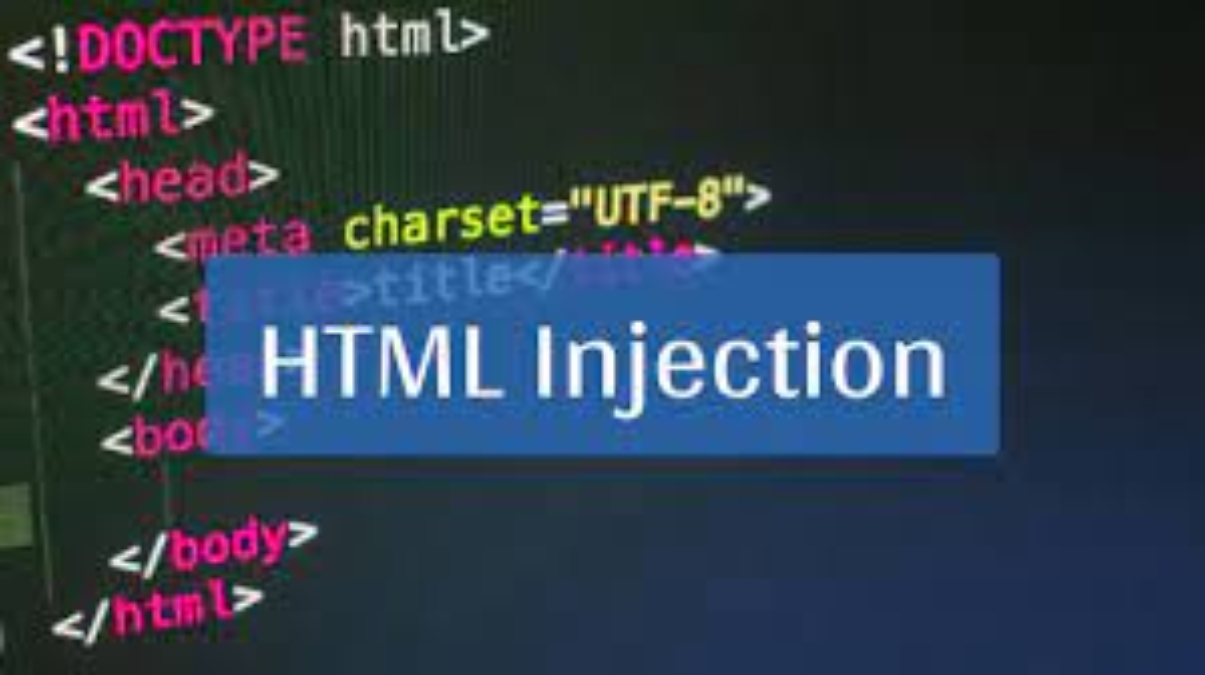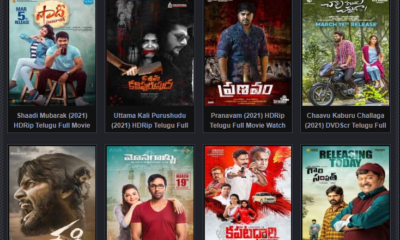Tech
5 Key Trends in Software Development for 2023: How to Stay Ahead of the Game

Introduction
In the fast-paced world of technology, staying current with the latest trends and developments in software development is essential for staying competitive. As new technologies and practices emerge, they can bring significant improvements in efficiency, performance, and functionality. In this blog post, we’ll take a look at the five key trends that are expected to shape the software development industry in 2023. From cloud-native architecture to artificial intelligence and machine learning, these trends will have a major impact on how software is developed and deployed. By understanding and staying ahead of these trends, you’ll be better equipped to create cutting-edge software and stay competitive in the industry.
Trend #1: Cloud Native Architecture
Cloud native architecture is a way of designing and building software that is specifically optimized for deployment on cloud platforms. The key principles of cloud-native architecture include using containerization, microservices, and automation to create scalable, flexible, and resilient systems.
One of the main benefits of cloud-native architecture is that it allows for greater scalability and flexibility. By breaking down monolithic applications into smaller, independent microservices, it becomes much easier to scale individual components as needed, rather than having to scale the entire system. This allows for more efficient use of resources and can also make it easier to update and maintain the software.
Several well-known companies have already embraced this trend and have reaped the benefits. For example, Netflix uses cloud-native architecture to power its streaming platform and was able to handle a massive increase in traffic during the COVID-19 pandemic. Another example is Uber, which uses cloud-native architecture to power its ride-hailing service, allowing it to handle millions of requests per second and rapidly scale to new markets.
To implement cloud-native architecture in your own projects, consider using containerization technologies such as Docker or Kubernetes to package and deploy your microservices. Additionally, consider using platform-as-a-service (PaaS) providers such as AWS Elastic Beanstalk or Google App Engine, which can help automate the deployment and scaling of your microservices. Finally, look for opportunities to automate your infrastructure and application management using tools like Ansible, Terraform, and Jenkins. By following these best practices, you’ll be well on your way to building cloud-native systems that are scalable, resilient, and easy to manage.
Trend #2: Low-Code and No-Code Platforms
Low-code and no-code platforms are a relatively new trend in software development that is changing the way we build software. These platforms allow developers, business analysts, and even non-technical users to create and deploy software applications without having to write any code. Instead, users can use a visual drag-and-drop interface to create and configure their applications.
Low-code and no-code platforms have a wide range of use cases and are being adopted in many different industries. Some examples of popular low-code and no-code platforms currently on the market include:
- Salesforce’s Lightning Platform
- OutSystems
- Mendix
- Microsoft PowerApps
- Appian
- Zoho Creator
When evaluating and choosing the right low-code or no-code platform for your needs, there are a few key factors to consider:
- The type of application you want to build: Different platforms are better suited for different types of applications, so it’s important to choose a platform that supports the specific features and functionality you need.
- Your team’s skill level: Some platforms require more technical expertise than others, so it’s important to choose a platform that your team will be able to use effectively.
- Integration with other tools: Consider whether the platform can integrate with other tools and systems you are already using.
- Scalability and security: Make sure the platform can scale and support your security requirements.
Low-code and no-code platforms have the potential to democratize software development and make it more accessible to a wider range of people. They can also help increase efficiency, reduce development time and costs, and improve the speed of delivering software projects. Keep in mind that it’s not a replacement for traditional software development but it can be a great addition to the development process.
Trend #3: Artificial Intelligence and Machine Learning
Artificial Intelligence (AI) and Machine Learning (ML) are rapidly becoming an integral part of software development. These technologies allow software to learn and adapt to new situations, improving performance and functionality. AI and ML are being used in a wide range of applications, from natural language processing and image recognition to predictive analytics and decision-making.
There are many industries and companies that are already using AI and ML in their software. For example, healthcare providers are using AI to help diagnose diseases, while retail companies are using ML to personalize their online shopping experiences. In the transportation industry, companies such as Tesla and Waymo are using AI and ML in self-driving cars to make real-time decisions. Financial institutions are also leveraging AI and ML for fraud detection and risk management.
Incorporating AI and ML into your own projects can bring significant benefits, such as improved decision-making and automation, and enhanced user experiences. However, there are also potential challenges that need to be considered. One of the main challenges is data availability and quality, as AI and ML algorithms require large amounts of data to learn and make accurate predictions. Additionally, it’s important to consider ethical and legal issues, such as data privacy and bias, as well as the security of AI and ML systems.
To get started with AI and ML in your own projects, it’s important to first identify the specific problem you are trying to solve and then choose the appropriate AI and ML techniques and tools for the job. It’s also important to have a good understanding of data science, as well as the ethical and legal considerations. It’s a good idea to partner with data scientists, machine learning engineers and experts in the field to help you navigate the complexities of AI and ML.
In summary, AI and ML have the potential to bring significant benefits to software development, but it’s important to be aware of the potential challenges and to approach their implementation with caution. By understanding the technology, the problems it can solve, and the ethical and legal considerations, you’ll be better equipped to incorporate AI and ML into your own projects successfully.
Trend #4: DevOps and Continuous Integration/Delivery
DevOps and Continuous Integration/Delivery (CI/CD) are rapidly becoming an integral part of modern software development. These practices aim to bring development and operations teams together, enabling them to collaborate more effectively and deliver software faster and more reliably.
The main goal of DevOps is to break down silos between development and operations teams and to automate as many processes as possible. This is achieved through a combination of tools and practices such as infrastructure as code, configuration management, and continuous integration and delivery.
CI/CD is a software development practice where code is continuously integrated, tested, and deployed to production. This allows teams to catch and fix errors early in the development process, and to deliver new features and updates to users faster.
Several well-known companies have already embraced these trends and have reaped the benefits. For example, Google uses DevOps practices to manage its massive infrastructure, while Netflix uses a variety of DevOps and CI/CD tools to deliver updates to its streaming platform in minutes. Amazon, Facebook, and Spotify are also examples of companies that have adopted DevOps practices.
To implement DevOps and CI/CD in your own projects, consider using tools such as Git for version control, Jenkins for continuous integration and delivery, and Ansible or Puppet for configuration management. Additionally, consider using cloud-based services such as AWS CodePipeline or Azure DevOps to automate your pipeline. By following these best practices, you’ll be able to deliver software faster, with fewer errors, and with higher quality.
In summary, DevOps and CI/CD are essential practices for modern software development, and they can bring significant benefits to your organization. By breaking down silos between development and operations teams, and automating processes, teams can deliver software faster and more reliably. By implementing these practices, you’ll be able to respond more quickly to changing requirements and deliver new features and updates to users faster.
Trend #5: Microservices
Microservices architecture is a way of building software applications by breaking them down into a collection of small, independent services that communicate with each other through APIs. Each microservice is designed to perform a specific, narrowly-defined function and can be developed, deployed, and scaled independently of the other services.
Microservices architecture differs from traditional monolithic architectures, where a single, large application is built to handle all aspects of the system. In contrast, microservices allow for more flexibility and scalability, as each service can be developed and deployed independently, and can be scaled up or down as needed. This allows for more efficient use of resources, faster development and deployment, and the ability to update and evolve parts of the system without affecting the entire application.
Several well-known companies have already embraced this trend and have reaped the benefits. For example, Amazon uses microservices to power its e-commerce platform, while Netflix uses microservices to power its streaming service. Uber and Airbnb also use microservices to manage their platforms.
When evaluating whether microservices are the right choice for your project, consider the complexity and size of your application, your team’s skills and experience, and the scalability and performance requirements of your system. If your application is complex and requires a high level of scalability, microservices architecture may be the right choice.
To implement microservices in your own projects, consider using containerization technologies such as Docker or Kubernetes to package and deploy your services. Additionally, consider using a service mesh such as Istio or Linkerd to manage the communication between your services. Finally, make sure to establish clear communication and collaboration between your development teams, and to use monitoring and logging tools to ensure the health and performance of your microservices.
In summary, microservices architecture is a powerful way to build software applications, and it can bring significant benefits to your organization. By breaking down a complex application into smaller, independent services, you’ll be able to develop and deploy software faster, with fewer errors, and with greater flexibility and scalability. By evaluating and implementing microservices architecture, you’ll be able to deliver more value to your users more quickly and efficiently.
Conclusion
In this blog post, we’ve discussed the 5 key trends that are expected to shape the software development industry in 2023: cloud-native architecture, low-code and no-code platforms, artificial intelligence and machine learning, DevOps and continuous integration/delivery, and microservices. By understanding and staying ahead of these trends, software development companies can create cutting-edge software and stay competitive in the industry.
It’s important to note that these trends are not mutually exclusive and they can complement each other. For example, AI and ML can be implemented on top of microservices, and cloud native architecture can be integrated with DevOps and CI/CD practices.
Staying up to date with these trends and continuously improving as a developer is crucial to staying competitive in the industry. It’s important to keep an open mind, be willing to experiment and to continuously learn.
To implement these trends in your own projects, start by identifying the specific problem you are trying to solve and then choose the appropriate technologies and tools for the job. It’s also important to have a good understanding of the ethical and legal considerations and to partner with experts in the field. By following these best practices, software development companies can deliver more value to their clients more quickly and efficiently.
In conclusion, the software development industry is constantly evolving, and it’s important to stay up to date with the latest trends and developments. By understanding and implementing these trends, software development company can create cutting-edge software and stay competitive in the industry. Keep an open mind, be willing to experiment, and continuously learn to stay ahead of the game.
Tech
DesertBuggyDubai.com: The Ultimate Desert Adventure Experience

Dubai is world-renowned for its vibrant culture, stunning architecture, and luxurious lifestyle. However, amidst its modern skyline and opulence, the city offers a thrilling natural escape: the vast desert landscape. One of the best ways to explore this unique terrain is through desert buggy adventures, and DesertBuggyDubai stands out as a leading provider of these adrenaline-pumping experiences.
What DesertBuggyDubai.com Offers
At DesertBuggyDubai.com, visitors can embark on a desert adventure like no other. Their desert buggy tours allow tourists and thrill-seekers to explore Dubai’s sandy dunes in powerful, all-terrain vehicles. Here’s what makes them a top choice:
High-Performance Buggies: The buggies offered are top-notch, designed to handle the extreme conditions of the desert. Equipped with safety features, these buggies ensure that riders can enjoy their adventure with peace of mind.
Guided Tours: Whether you’re an experienced rider or a beginner, DesertBuggyDubai.com ensures everyone can partake in the adventure with confidence. Professional guides lead the tours, sharing their knowledge of the desert while ensuring the safety of all participants.
Customizable Experiences: The site offers a variety of tour packages to cater to different preferences and group sizes. Whether you’re looking for a short, adrenaline-filled experience or a longer, more immersive journey into the desert, there’s something for everyone.
Family-Friendly Options: While buggies are typically associated with high-energy fun, DesertBuggyDubai.com provides family-friendly packages that allow groups with children to enjoy the beauty of the desert in a safe and exciting way.
Highlights of the Desert Buggy Adventure
Explore the Arabian Desert: This tour takes you through the majestic Arabian Desert, where you can witness vast dunes, stunning sunsets, and the mesmerizing isolation of the desert.
Thrilling Dune Bashing: The experience isn’t just about sightseeing; dune bashing in powerful buggies adds an extra layer of excitement to the trip. Feel the rush as you navigate over and around dunes at thrilling speeds.
Sunset and Sunrise Tours: For those who want a more scenic experience, DesertBuggyDubai.com offers sunset and sunrise tours. Watching the desert transform under the changing light is an unforgettable experience.
Safety and Professionalism
Safety is a top priority for DesertBuggyDubai. All buggies are regularly maintained, and tours are led by trained professionals who are experienced in desert driving. Helmets, goggles, and other safety gear are provided to ensure a safe and comfortable ride. Riders are briefed on safety guidelines before starting the adventure, ensuring that everyone is well-prepared.
Why Choose Desert Buggy Dubai?
Top-Notch Customer Service: From booking to the actual tour, DesertBuggyDubai ensures a seamless experience. Their customer service is known for being responsive, accommodating, and ready to help.
Unmatched Desert Experience: With years of experience in providing desert tours, DesertBuggyDubai.com has built a reputation for delivering exhilarating adventures that showcase the beauty of Dubai’s natural landscape.
Flexible Packages: Whether you’re planning a solo adventure, a group outing, or a corporate event, the site provides flexible packages tailored to meet diverse needs.
Conclusion
For those looking to add some adventure to their Dubai trip, DesertBuggyDubai provides the perfect way to experience the thrill of the desert while enjoying breathtaking scenery. With professional guides, high-performance buggies, and a commitment to safety, they offer an unforgettable journey across the dunes. Whether you’re a tourist or a local seeking excitement, Desert Buggy Dubai promises a desert adventure like no other.
Visit their website today to book your next desert escapade!
Tech
Preventing HTML Injection Attacks: Best Practices for Developers

Web development is a constantly evolving field, with new techniques and frameworks being introduced on a regular basis. As you strive to keep pace with these changes, it’s crucial to remember one of the most fundamental aspects of web development: security. Maintaining the security of your websites and applications is a top priority, and one of the most common attacks to avoid is an HTML injection attack.
As a web developer, you constantly create, test, and deploy web applications. You are essentially leaving your digital imprint on the vast internet. With this power comes a heavy burden: ensuring the safety and security of your applications. This article will provide you with the knowledge and best practices to prevent HTML injection attacks, a common and potentially devastating cybersecurity threat.
In the following sections, we define what HTML injection is, discuss the impact of these attacks, and offer some techniques for preventing them.
What is an HTML Injection Attack?
HTML (Hyper Text Markup Language) is the foundation of web development. It is the industry standard language for documents designed to be seen in a web browser. This web technology, however, can also be used by hackers to launch an HTML injection attack. According to a recent report, nearly half of the HTML email attachments selected were malicious, with a staggering 45.7% found to be harmful, highlighting the risk this technology poses when used for HTML attacks.
An HTML injection attack happens when a hacker inserts malicious HTML code into a website or application. They exploit vulnerabilities in the website’s code, allowing them to inject HTML or JavaScript code that can modify the website’s structure or behavior. This can lead to various harmful outcomes, from defacing the website to stealing sensitive user data.
HTML injection attacks can take many forms. One of the most common is a stored HTML injection attack, where the malicious code is permanently stored on the target server. This code is then served to users who visit the compromised page. Another form is a reflected HTML injection, where the malicious code is hidden within a URL. When one clicks on the URL, the code is executed.
Best Practices for Preventing HTML Injection
Fortunately, there are steps you can take to protect your websites and applications from HTML injection attacks. These best practices involve a mix of proactive coding techniques and robust security measures.
To begin, always validate user input. This is a fundamental but critical step in preventing HTML injection attacks. Never trust user-provided data without first validating it. Use server-side validation to ensure the data is in the proper format and contains no malicious code.
Second, employ secure coding methods. This includes using parameterized queries or prepared statements when interacting with a database. These techniques can aid in preventing SQL injection attacks, which are frequently used in tandem with HTML injection attacks.
Next, keep your software and systems up to date and patched regularly. This includes any frameworks or libraries you’re using and your content management system (if applicable). Any known vulnerabilities that could be exploited in an HTML injection attack can be fixed with regular updates.
In addition to the above practices, here are several more specific strategies you can use to prevent HTML injection attacks:
- HTTPOnly Cookies: When a cookie is set to HTTPOnly, it cannot be accessed by client-side scripts such as JavaScript. This is especially useful in reducing the risk of session hijacking, where an attacker attempts to impersonate a user by stealing a session cookie. By preventing client-side access, HTTPOnly cookies make it more difficult for attackers to capture these critical tokens through cross-site scripting (XSS) attacks.
- Content Security Policies (CSP): Content Security Policies allow website administrators to specify which sources of content browsers are permitted to load on a webpage. By enforcing such policies, unauthorized or malicious content, such as JavaScript injected by an attacker, is stopped from being executed, significantly reducing the risk of HTML injection and other related vulnerabilities.
- Use HTTPS: HTTPS (Hypertext Transfer Protocol Secure) encrypts data as it travels between the user’s Web browser and server. Any data intercepted during transmission, including potentially malicious injected content, remains encrypted and unintelligible to the attacker when using HTTPS. This ensures that, even if HTML injection occurs, the attacker cannot read or modify the data as it travels across the network, adding an essential layer of security to web communications.
Identifying and Blocking HTML Injection Attacks
Even with the best prevention measures in place, it’s still possible that an HTML injection attack could target your website or application. Therefore, it’s essential to have measures in place to identify and block these attacks.
One effective way to do this is using a Web Application Firewall (WAF). A WAF can detect and block HTML injection attacks by inspecting incoming traffic and identifying patterns that match known attack techniques. Furthermore, it acts as a barrier between the web application and the internet, filtering out malicious requests before they reach the server and executing potentially harmful code.
Another tool you can use is an Intrusion Prevention System (IPS). An IPS analyzes network traffic for suspicious activity and can block or alert you to potential HTML injection attacks. By actively analyzing and taking action on incoming traffic, an IPS helps preemptively stop attacks, complementing your security posture with real-time threat prevention and mitigation.
To sum up, HTML injection attacks must be avoided, and developers have the ability to stop these threats. Developers lay the groundwork for secure web applications by validating user input, sanitizing data, and implementing content security policies. It’s not just about writing code; it’s about building an impenetrable digital fortress that protects against attacker ingenuity.
A developer’s role extends beyond creation and involves the vigilant protection of the digital landscape. It is our responsibility as web architects to ensure that the frameworks we build will withstand the risk of potential breaches. Developers reaffirm their commitment to a safer internet piece by piece with each secure application released.
Tech
The Rhythm Unveiled: Exploring Tanzohub’s Vibrant World

Tanzohub Streamline your workflow, increase efficiency, and improve cooperation with the help of this revolutionary platform’s many capabilities. If you own a business, no matter how big or little, TanzoHub has you covered. This blog article will take you on a tour of TanzoHub, explaining all the features, benefits, and user success stories that you need to know. Alright, then, TanzoHub, let’s begin our thrilling adventure!
What is TanzoHub?
If you’re looking for a way to modernise your company processes, go no further than TanzoHub. You can manage projects, engage with team members, measure progress, and more from one single hub of critical tools and information. Wave farewell to disconnected communication, interminable email chains, and scattered spreadsheets with TanzoHub.
Essentially, TanzoHub is a platform for managing projects. It lets you make tasks, give them to team members, establish due dates, and track their progress in real-time. It helps keep everyone on the same page by outlining the project’s major dates and milestones.
But what really sets TanzoHub apart is how easily it integrates with other productivity tools. This includes calendars and cloud storage services like Dropbox and Google Drive. So, you won’t have to navigate between apps to get to the information you need; it’s all right there in the TanzoHub interface.
Key Features and Benefits
Among Tanzohub’s many notable features and benefits are:
Immersive Participation
Attendees are transformed into active participants using Tanzohub. Incorporating themselves into the live event allows them to become immortalised participants. In this way, the audience is able to influence the performance and ambiance of the event, making for a very interactive and captivating experience.
Social Connection
Using Tanzohub, participants may create animated avatars and engage in visual communication with one another. People are able to form relationships as easily as if they were physically there, which promotes a feeling of belonging and social bonding.
Gamification and Rewards
Tanzohub uses game mechanics to encourage engagement with features such as leaderboards, badges, and points. Adding a sense of excitement and intrigue, attendees may earn recognition and incentives for their participation.
Data and Analytics
A wealth of metrics and data about attendees’ interaction and participation is captured by the platform in real-time. This gives the organisers a lot of information that they can use to make the Tanzohub platform and future live performances even better.
Multi-Platform Accessibility
Any device, from smartphones to big size monitors, may access Tanzohub. This opens the door for a wide range of event settings and allows attendees from all over the world to participate.
Audiences at Scale
With Tanzohub, events can visually engage audiences on a far grander scale than was previously possible with live performances. This makes events with thousands of participants all at once much more exciting and lively.
How does TanzoHub work?
With TanzoHub, both corporations and freelancers may enjoy a streamlined experience. However, what is the true mechanism of TanzoHub? So, let’s examine it more closely.
Freelancers may advertise their services and talents on TanzoHub, and companies can simply discover qualified candidates to complete their tasks. The first step is for freelancers to build comprehensive profiles that showcase their skills, work samples, and evaluations from past clients.
The flip side of the coin is that companies may peruse these profiles with targeted search criteria. Freelancers that are a good fit for their projects might be found by posting job postings.
Businesses may use TanzoHub’s messaging system to start a conversation with a freelancer they’re interested in working with. This gives them the opportunity to talk about the project in depth and work out the specifics, such as conditions and deadlines, before they start working together.
To help both parties remain on track and complete projects on time, TanzoHub offers solutions like time-tracking features and milestone management systems during the project execution phase.
In terms of financial transactions, TanzoHub provides safe options through many gateways. Freelancers may rest easy knowing that they will get their cash promptly and without any fuss after their tasks or milestones are successfully accomplished.
TanzoHub is able to do its job by bringing together skilled freelancers and companies that may use their services, by easing communication at every step of the project and giving vital tools for tracking progress, and by guaranteeing the security of all financial transactions. It makes freelancing collaborations easier than ever before and streamlines operations significantly.
What are the Benefits of Using TanzoHub?
The characteristics and benefits listed below are a big reason why Tanzohub is so popular:
Automation and Robotics
The user’s efficiency can be enhanced by the usage of automation. Alternatively, robotics provides opportunities for hands-on learning via the design, construction, and programming of many types of robots, drones, rovers, and other devices, such as Lego Mindstorms, Raspberry Pi, and Arduino.
Improved Efficiency
Because TanzoHub provides technologies like machine learning (ML) and artificial intelligence (AI) to both employers and employees, there are no barriers to productive communication anymore.
Better Communication
There are a plethora of options for members to get in touch with one other when they’re online. In addition, the software may send out instant notifications in the event that a user goes offline or if there is a misunderstanding.
Enhanced Scalability
You may handle both long-term and short-term tasks with the help of customization options. The project owner is free to make a reasonable decision based on their own tastes and the features and tools that will be most helpful for their particular business endeavour.
Proper Administration
One must master the art of time management and strategy management in order to juggle several schemes at once. The management of this platform takes care of both problems, and it also helps the worker out by organising his schedule in a logical way.
Personalized Guidance
TanzoHub uses user data for two main purposes: improving its performance and guiding users. In this way, the software may improve its suggestions and updates based on user input.
Conclusion
Having a reliable system in place to oversee your online presence is crucial in the modern era. Social media administration, content production, scheduling, analytics tracking, and more may all be simplified with its all-inclusive solution. Users are equipped with the necessary tools to expand their online presence and interact with their audience through its intuitive UI and powerful features. From making engaging postings to analysing insights provided by data, this platform has it all.
FAQS
How does Tanzohub work?
Participants may capture footage that will be instantly transformed into animated avatars using the app. To handle audience participation and incorporate crowd feeds into the live show, organisers utilise its Studio software.
What can you do at Tanzohub as an attendee?
The audience may do a lot more than just watch the show; they can applaud, dance, emote, communicate, earn points, and engage with the performers and other attendees. Participation from the audience is enhanced.
What types of events work with Tanzohub?
Tanzohub is a fantastic platform for live events and performances of all types, including concerts, theatre, dance, comedy, esports, conferences, and many more.
How is Tanzohub different from virtual events platforms?
Instead than just viewing the show, it aims to immerse viewers in its emotional core.
How much does Tanzohub cost?:
Tanzohub price is determined by the duration and scale of the event, as well as the features that are needed.
-

 Apps1 year ago
Apps1 year agoWhy is Everyone Talking About Hindi Keyboards?
-

 Social Media1 year ago
Social Media1 year agoWho is Rouba Saadeh?
-

 Apps1 year ago
Apps1 year agoThings you need to know about Marathi keyboard today
-

 Apps1 year ago
Apps1 year agoStuck with Your default Bangla keyboard? Isn’t it time for a change?
-

 Social Media1 year ago
Social Media1 year agoMati Marroni Instagram Wiki (Model’s Age, Net Worth, Body Measurements, Marriage)
-

 Games12 months ago
Games12 months agoTop 7 Popular Puzzle and Card Games for Relaxing Your Brain on Mobile, Featuring Solitaire
-

 Entertainment1 year ago
Entertainment1 year ago12 Online Streaming Sites that Serve as Best Alternatives to CouchTuner
-

 Entertainment1 year ago
Entertainment1 year agoMovierulz Website: Movierulzz 2021 Latest Movies on Movierulz.com
